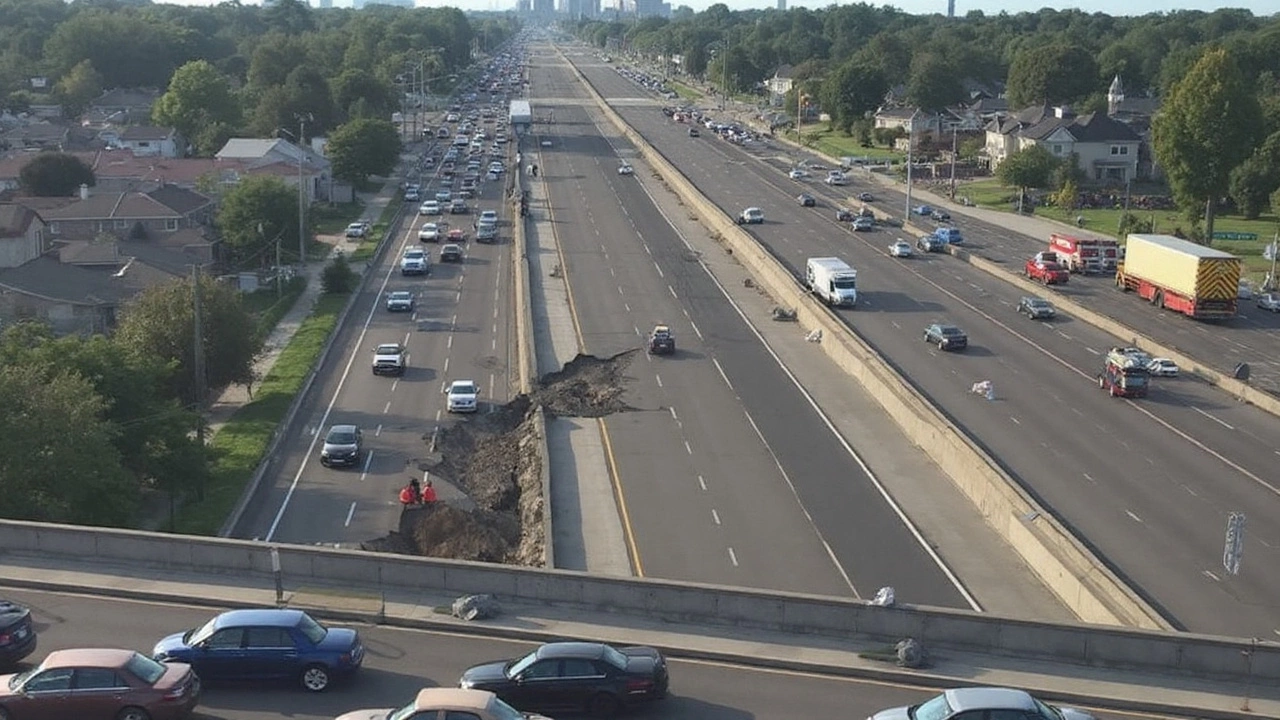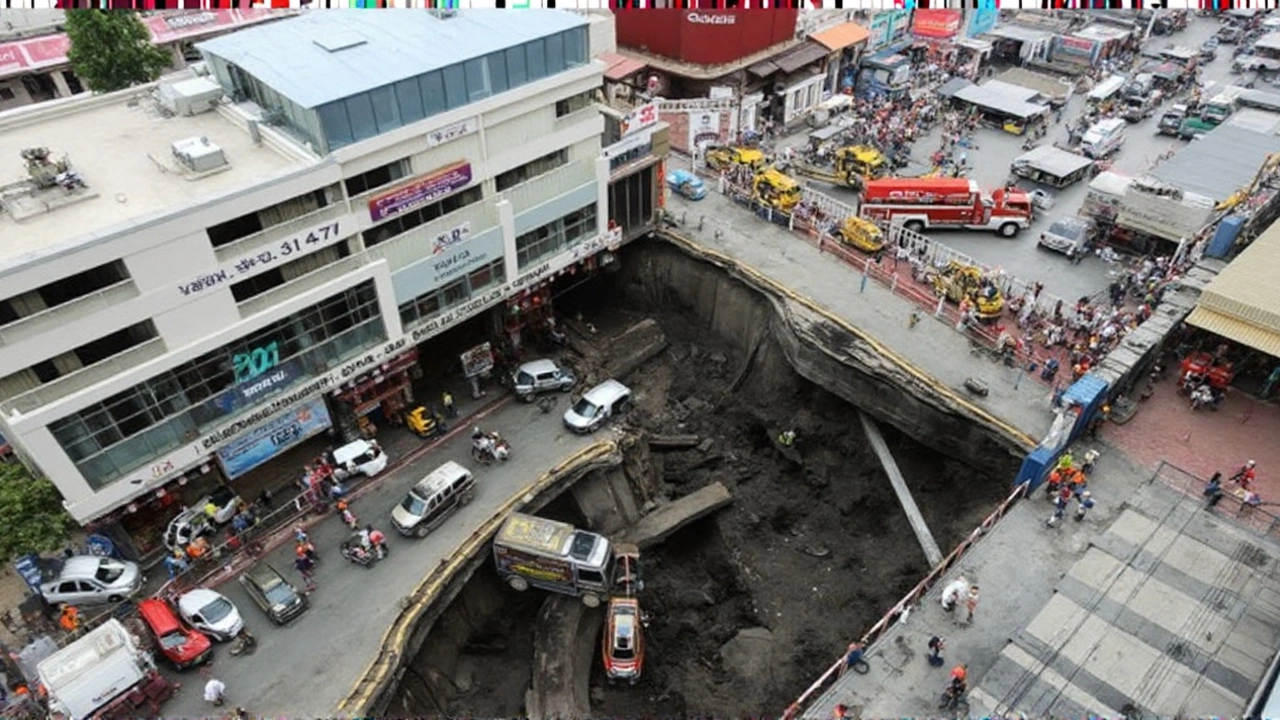What happened on Samsen Road
At about 7 a.m. on Wednesday, a huge crater ripped open the surface of Samsen Road in Bangkok’s Dusit district. The opening measured roughly 30 by 30 metres, went down some 50 metres, and covered an area of about 900 square metres. Cars vanished into the void, and electric poles toppled, sending sparks across the street.
Water burst from ruptured underground pipes, turning the scene into a chaotic flood of mud and rain‑water. Emergency crews quickly cut power and water supplies to stop further hazards, while police cordoned off the area.
Vajira Hospital, a major public healthcare centre that sits right opposite the sinkhole, halted new admissions and began evacuating patients already inside. Residents of nearby apartment blocks were also moved out as engineers inspected the stability of surrounding structures.

Why it occurred and what officials say
Bangkok Governor Chadchart Sittipunt explained that the immediate danger was not the hospital itself but a police station a few metres away, which remains at risk. He assured the public that evacuation plans were already in place and that no casualties had been reported.
Suriyachai Rawiwan, head of the city’s disaster‑prevention department, pointed to a mix of heavy rainfall and a leaking pipe that gradually eroded the soil beneath the road. The water, he said, carried soil down into an under‑construction subway station being built by the Mass Rapid Transit Authority (MRTA), weakening the ground and triggering the collapse.
The sinkhole is directly linked to the ongoing construction of a new underground railway station in Bangkok’s historic old town. The tunnelling work appears to have intersected with aging drainage and utility networks, creating a perfect storm for the ground to give way.
Authorities have launched a multi‑agency response:
- Roads around the crater were closed, causing major traffic snarls in central Bangkok.
- Utility companies isolated the affected power and water lines.
- Engineers from the MRTA and city infrastructure teams began a detailed assessment of the tunnel’s structural integrity.
- Police and disaster‑relief squads set up a perimeter to keep by‑standers safe.
The swift action prevented injuries, but the incident has sparked a broader debate about the safety of rapid urban development in a city where many underground pipes date back decades.
Experts warn that as Bangkok pushes forward with ambitious transit projects, the hidden maze of old sewers, water mains and foundations must be mapped and reinforced. Otherwise, more events like this could become a regular risk for densely populated districts.
For now, the focus remains on stabilising the sinkhole, repairing the damaged subway tunnel, and restoring normal traffic flow. Officials say they will keep the public updated as investigations continue and as plans are drawn up to prevent a repeat of this dramatic collapse.
